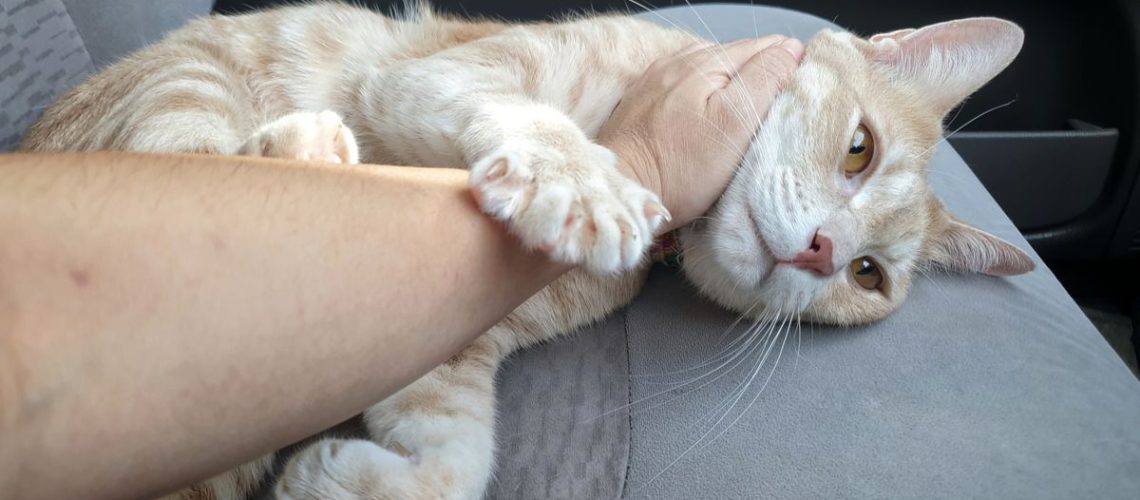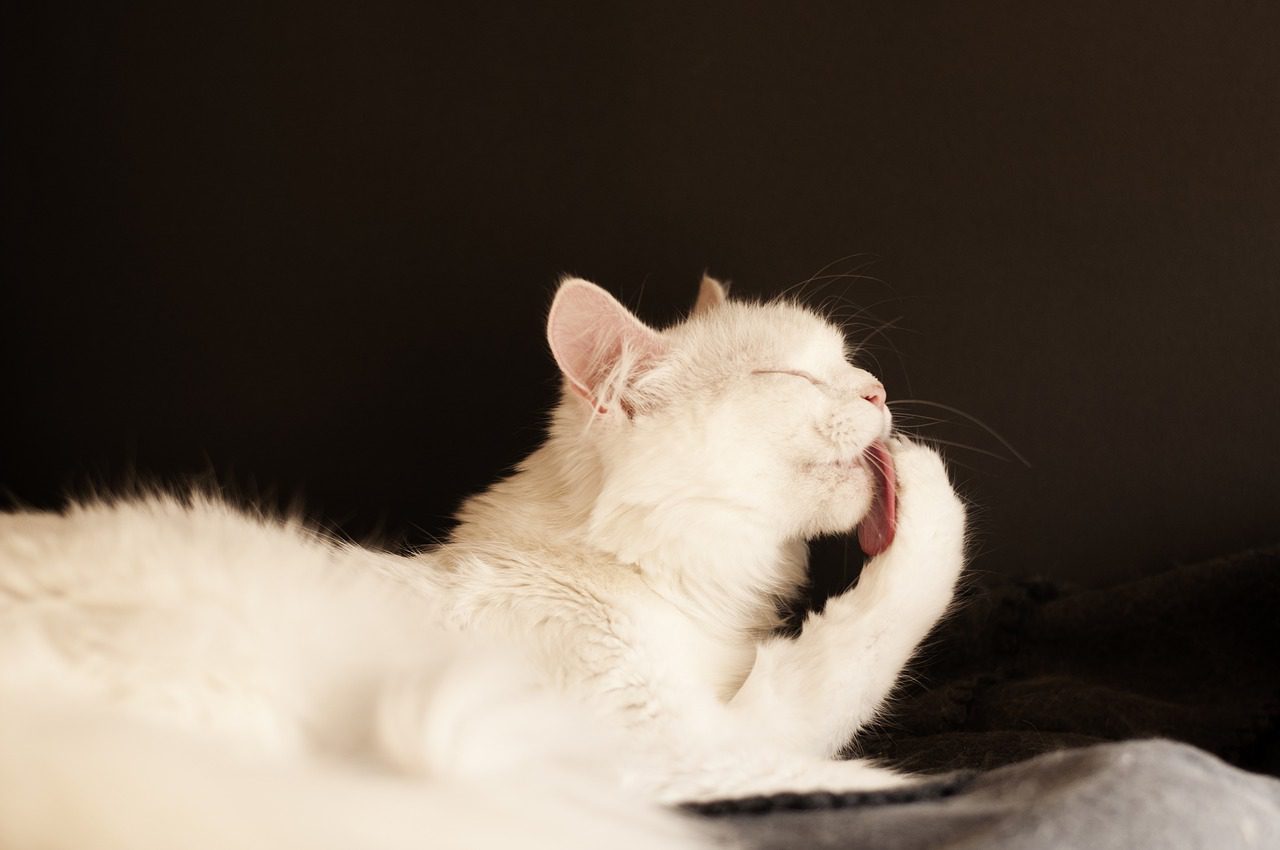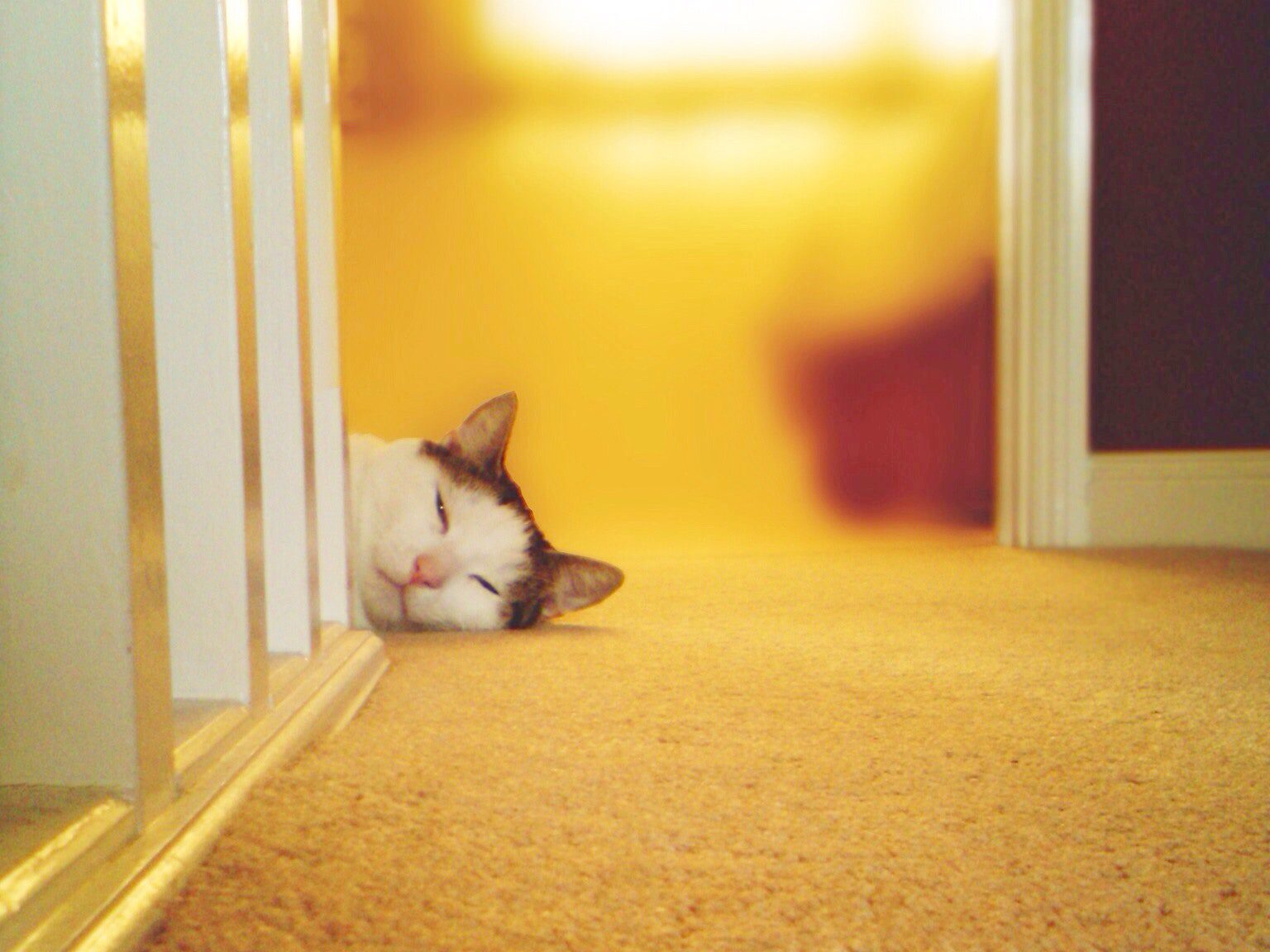Introduction:
Picture this: you're curled up on the couch, wrapped in a cozy blanket, with your favorite furry friend purring contently beside you. As you stroke their soft fur, you notice their paws rhythmically kneading into your lap. Have you ever wondered why cats do this? Exploring the fascinating world of cat behavior and understanding the cozy ritual of kneading can not only deepen your bond with your feline companion but also provide insights into their instinctive nature. In this article, we'll uncover the secrets behind why cats knead softly and reveal how this simple act brings comfort to both them and us. So, let's dive in and unravel the enchanting mystery that lies within our cuddly companions!
Key Takeaways:
- Cats knead as a way to show affection and mark their territory.
- Kneading is a behavior that starts from kittenhood and continues into adulthood.
- Kneading helps cats stretch their muscles and relieve stress.
- Providing soft surfaces, such as blankets or pillows, encourages cats to knead.
- Understanding the meaning behind kneading can deepen the bond between cats and their owners.
The Cozy Ritual: Understanding Why Cats Knead Softly
Why do cats knead?
Cats have a unique behavior called kneading, where they push their paws back and forth against a soft surface. This action is similar to how a baker kneads dough. While it may seem strange, there are reasons behind this cozy ritual.
One reason cats knead is because it reminds them of being kittens. When kittens nurse from their mother, they use their paws to stimulate milk flow. As adult cats grow and become independent, they continue this behavior as a way to find comfort and relaxation.
How do cats show affection through kneading?
Kneading is not only a comforting behavior for cats but also a way for them to show affection towards their owners. When a cat kneads on your lap or next to you, it's their way of saying "I love you." It's like receiving a gentle massage from your furry friend!
Cats also have scent glands in their paws, so when they knead, they are leaving behind their unique scent as a way to mark territory. So, when your cat chooses to knead on you or your belongings, it's another sign that they feel safe and secure in your presence.
Why do cats prefer soft surfaces for kneading?
Cats have sensitive paw pads, which is why they prefer soft surfaces for kneading. Soft materials like blankets or pillows provide the right amount of cushioning and give the cat's paws a comfortable sensation while they engage in this behavior.
In the wild, cats would have used tall grass or leaves as their preferred surface for kneading. The softness of these natural materials would mimic the feeling of nesting or preparing a cozy spot for rest. So, when your cat kneads on your favorite blanket, they are essentially creating their own little nest of comfort.
The physical actions of cat kneading
When a cat kneads, they use a specific set of physical actions. First, they extend their claws and push them into the surface. Then, they flex their paws back and forth in a rhythmic motion. This action can sometimes be accompanied by purring or even drooling!
Some cats also like to "make biscuits" by alternating between front paws while kneading. This gentle movement is reminiscent of how bakers knead dough to make bread. It's an adorable sight that showcases the dexterity and agility of our feline friends.
Is cat kneading common among all cats?
Kneading is a behavior commonly observed in domestic cats but not exclusive to them. Many wild felines also exhibit this behavior in the same way as our beloved pets. Whether it's a lion, tiger, or housecat, the act of kneading is deeply ingrained in feline nature.
While not every cat may engage in kneading behavior, it is prevalent enough to be considered a natural instinct across different breeds and environments. So if your furry friend loves to knead, consider yourself lucky to witness this charming display of their innate behaviors.

Potential health benefits of cat kneading
Cat kneading can have several potential health benefits for both cats and their owners. The rhythmic motion of kneading can help stimulate blood circulation in the cat's paws and promote overall relaxation.
This behavior can also serve as an excellent stress reliever for cats. By engaging in gentle paw movements against a soft surface, cats release tension and feel more at ease. Similarly, when owners witness their cats kneading, it can bring a sense of joy and comfort, creating a positive bond between the two.
Strengthening the bond: Encouraging and responding to your cat's kneading behavior
If you want to encourage your cat's kneading behavior, provide them with soft surfaces like blankets or beds where they can comfortably engage in this ritual. You can also gently stroke your cat while they knead to show them affection and reinforce the bond between you.
When your cat kneads on you, it's essential to respond positively. Offer them gentle pets and praise to let them know that their affectionate gesture is appreciated. Remember, cats often seek attention through kneading, so reciprocating with love and care will strengthen the bond you share.
How Cats Show Affection Through Kneading: A Simple Guide
Understanding Cat Behavior
When a cat kneads, it is a sign of affection and contentment. This behavior involves the rhythmic pushing in and out motion of their paws against a surface, often accompanied by purring. Cats usually start kneading as kittens when nursing from their mother, as it stimulates milk flow. As they grow older, they continue this behavior to show love and comfort. Understanding why cats knead can help us strengthen our bond with them.
The Science Behind Kneading
Kneading is deeply ingrained in a cat's instinctual behavior. It is believed to be a remnant of their wild ancestors who would knead grass or leaves to create a comfortable spot for resting or giving birth. The act of kneading releases endorphins in cats, which are natural feel-good chemicals that promote relaxation and reduce stress. It also helps them mark their territory by leaving scent marks from the glands on their paws.
Tips for Encouraging Kneading
If you want to encourage your cat to knead more often, provide them with soft surfaces like blankets or pillows where they can comfortably engage in this behavior. You can also gently stroke their back or scratch behind their ears while they knead to enhance the bonding experience. However, remember that not all cats enjoy being touched during kneading, so it's essential to observe your cat's body language and respect their boundaries.
What Not to Do
It's important not to punish or discourage your cat from kneading as it is a natural behavior for them. Avoid forcefully restraining their paws or scolding them for making biscuits on furniture or clothing. Instead, redirect their attention by offering an appropriate scratching post or providing them with a designated kneading area, such as a soft mat or towel. This way, you can protect your belongings while still allowing your cat to express their affection.
Why Do Cats Prefer Soft Surfaces for Kneading? Explained
The Comfort Factor
Cats have a natural preference for soft surfaces when it comes to kneading. This behavior is rooted in their instinctual need for comfort and security. Soft surfaces, such as blankets, pillows, or even our laps, provide a sense of warmth and familiarity that mimics the feeling of being with their mother during nursing. The gentle pressure against these surfaces also adds to the soothing effect that cats seek through kneading.
Creating a Safe Space
Kneading on soft surfaces allows cats to create their own safe space. By engaging in this behavior, they release pheromones from the glands on their paws, marking the area as their territory. This scent helps them feel secure and establishes a familiar environment where they can relax and unwind. It's important to respect this need for a safe space and provide your cat with suitable surfaces where they can freely knead without any disturbances.
Providing Suitable Options
To cater to your cat's preference for soft surfaces, consider providing them with cozy blankets or mats specifically designated for kneading. Place these items in areas where your cat likes to spend time, such as near windows or on their favorite resting spots. Additionally, offering a variety of textures like fleece or plush materials can add extra appeal and encourage more frequent kneading sessions.
Understanding Individual Preferences
While most cats prefer soft surfaces for kneading, it's essential to remember that each cat is unique and may have different preferences. Some cats may enjoy kneading on firmer surfaces like carpets or even leather furniture. Observe your cat's behavior and adapt to their preferences accordingly. By understanding and accommodating their individual needs, you can create an environment that promotes their comfort and happiness.
The Physical Actions of Cat Kneading: What and Why?
When a cat kneads, it is a rhythmic motion of pushing their paws in and out against a soft surface. This behavior is commonly seen in kittens but can continue into adulthood. The reason behind this action can be traced back to their early days as nursing kittens. During nursing, kittens use kneading to stimulate milk flow from their mother's nipples. As they grow older, cats may continue this behavior as a way to show contentment or to mark their territory.
The Muscles Involved
Kneading involves several muscles in a cat's paws and legs. The primary muscles used are the flexor digitorum superficialis and flexor digitorum profundus, which control the movement of the claws. These muscles work together to create the repetitive motion of kneading.
The Purpose of Kneading
Kneading serves multiple purposes for cats. Firstly, it helps them stretch and exercise their leg muscles, promoting flexibility and strength. Secondly, it acts as a way for cats to mark their territory by leaving scent marks from the sweat glands located on their paw pads. Additionally, kneading can be a self-soothing behavior that provides comfort and relaxation for cats.
Cat Kneading: Is It Common Among All Cats?
Cat kneading is a common behavior observed in many domesticated cats. While not all cats engage in kneading, it is prevalent among various breeds and ages. Kittens often start kneading at an early age during nursing, while adult cats may continue this behavior throughout their lives.
Breed Variations
Although cat kneading is not limited to specific breeds, some breeds are more prone to this behavior. For example, Ragdoll cats are known for their tendency to knead excessively due to their genetic predisposition. However, it's important to note that individual cat personalities and experiences also play a role in determining whether they engage in kneading or not.
Age and Gender Differences
Kneading behavior can vary based on the age and gender of the cat. Kittens tend to knead more frequently as they learn this behavior during nursing. Male cats may exhibit more vigorous kneading compared to females, possibly due to their instinctual need to mark territory.
Potential Health Benefits of Cat Kneading for Cats and Owners
Cat kneading offers several potential health benefits for both cats and their owners. Understanding these benefits can help foster a positive relationship between humans and feline companions.
Promotes Relaxation and Stress Relief
Kneading can be a form of self-soothing for cats, helping them relax and relieve stress. The rhythmic motion of kneading stimulates the release of endorphins, which are natural feel-good hormones. This can lead to a calmer and happier cat, creating a peaceful environment for both the cat and its owner.
Enhances Bonding
Engaging with your cat during kneading sessions can strengthen the bond between you and your furry friend. By responding positively to their kneading behavior, such as providing gentle strokes or offering a cozy blanket, you show your cat love and affection. This interaction builds trust and deepens the emotional connection between you both.
Strengthening the Bond: Encouraging and Responding to Your Cat's Kneading Behavior
Encouraging and responding to your cat's kneading behavior can be a rewarding experience that strengthens the bond between you and your feline companion. Here are some tips on how to make the most of this behavior:
Create a Comfortable Environment
- Provide soft surfaces, such as blankets or pillows, for your cat to knead on.
- Ensure your cat has access to a cozy and warm space where they feel safe and secure.
Positive Reinforcement
- Praise your cat when they engage in kneading behavior, using a soothing tone of voice.
- Gently stroke their fur while they knead to show affection and reinforce the positive experience.
Avoid Punishment
It is important not to punish or discourage your cat from kneading. This behavior is natural for them and serves various purposes. Instead, redirect any unwanted scratching associated with kneading by providing appropriate scratching posts or pads.
By following these tips, you can create a harmonious environment that encourages your cat's natural behaviors while strengthening the bond between you both.
In conclusion, cats knead as a way to show comfort and contentment. It is a cozy ritual that helps them relax and feel safe in their environment. So, the next time you see your furry friend kneading, remember it's their way of saying they're happy and at ease with you.
Why do cats knead soft things?
Cats knead as a way to express comfort and pleasure. They often knead when being petted or when finding a cozy place to nap. If your cat kneads on your lap, it is showing love and contentment and may then settle in for a pat or a nap. Sometimes, cats also knead when they are stressed to create a calming atmosphere.
What is the cat kneading ritual?
When a cat is curled up on your lap and kneading, it is often a sign of affection. This behavior is more likely to occur when you are petting the cat. It is their way of showing love towards you, even though sometimes their claws may dig into your skin.
What does it mean when a cat kneads a soft blanket?
There are numerous reasons why cats engage in the behavior of kneading blankets or other soft items. Cats typically knead as a way to express pleasure. Additionally, they may knead on your lap as a sign of love and contentment. If a cat is feeling stressed, kneading can help create a soothing and calm atmosphere.
Why does my cat go into a trance when kneading?
If your cat vigorously kneads and enters a trance-like state, it could indicate that she is entering her heat cycle. Some cats show their readiness to mate by meowing loudly, kneading excessively, and occasionally marking with urine. If your unfixed female cat starts kneading uncontrollably, this could be the explanation.
Why do cats push their paws on soft things?
Cats are territorial animals and one way they protect their territory is by marking their belongings with their scent. They do this by kneading their paws on surfaces, including you, which activates the scent glands in their paw pads and marks that item as their own.
Do unhappy cats knead?
Cats engage in kneading behavior when they are feeling relaxed and happy, often when their favorite human is around. However, some cat owners may not enjoy their cat kneading directly on them. Redirecting the cat to a nearby soft surface can resolve this issue and ensure everyone is comfortable.

















